
by Stefan F. Wirth
MOLTING
For animals such as insects, having an outer cuticle means a completely different anatomy than we know from us mammals. It is not only skin that protects against harmful external influences, but also the only available skeleton. As a result, the muscles do not attach to an ossified inner skeleton, but to the outer skin, which is also referred to as an exoskeleton.
As a common rule in insects, the exoskeleton cannot follow the growth of its owner, which is why growing up is not an extensive continuum, but always goes hand in hand with the loss of the old skin and the simultaneous formation of a new skin. So, arthropods regularly completely renew their external appearance. And the material composition of such an exoskeleton must have special characteristics to correspond to its tensile and pressure loads.
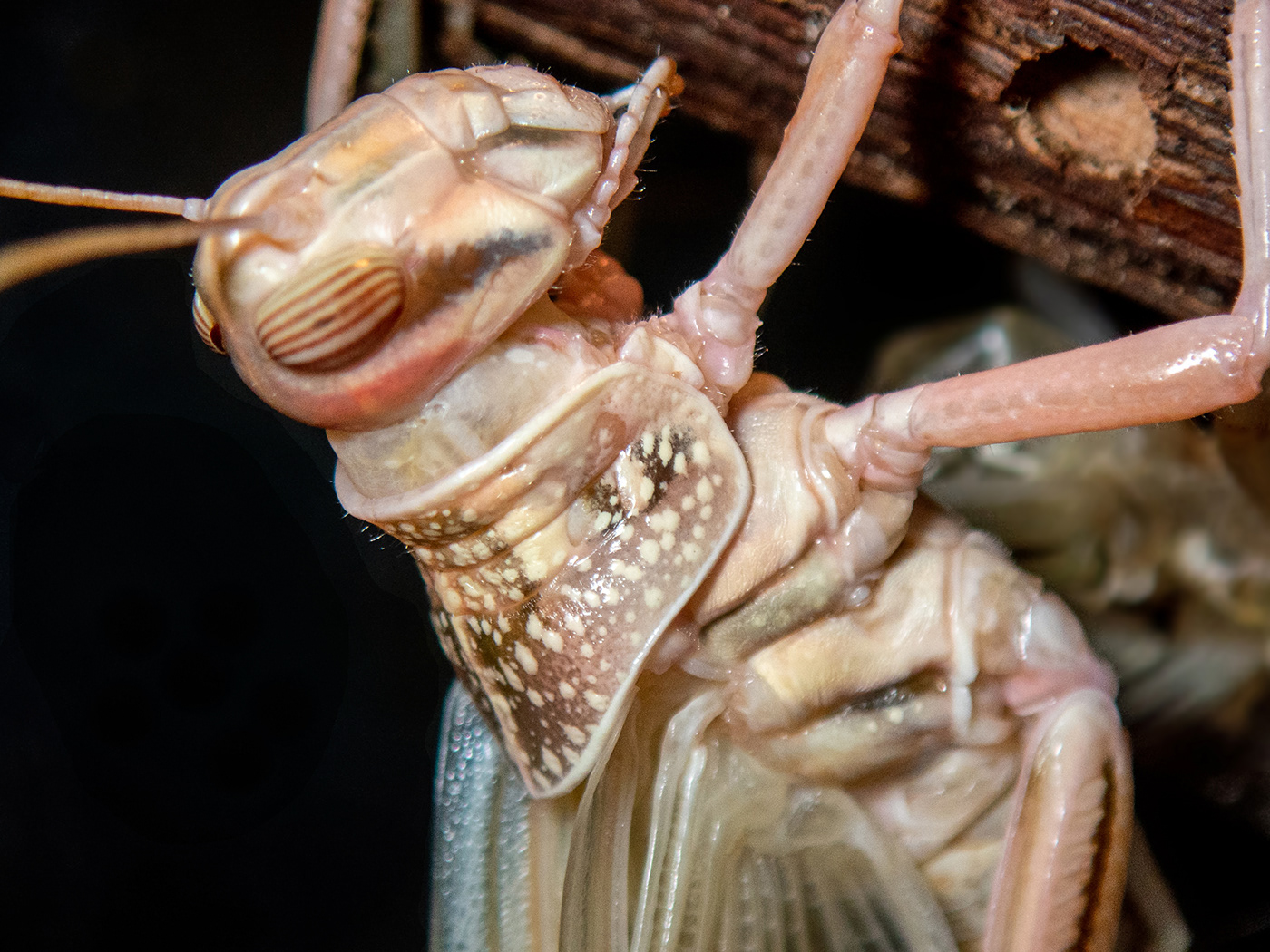
A desert locust, Schistocerca gregaria, has just completed the journey from juvenile to adult. In between lies the so-called adult molt. But "completed" is a hasty term, as the procedure is not quite finished yet. Because immediately after molting, the sclerotin deposits are not yet formed and the cuticle is still weak.
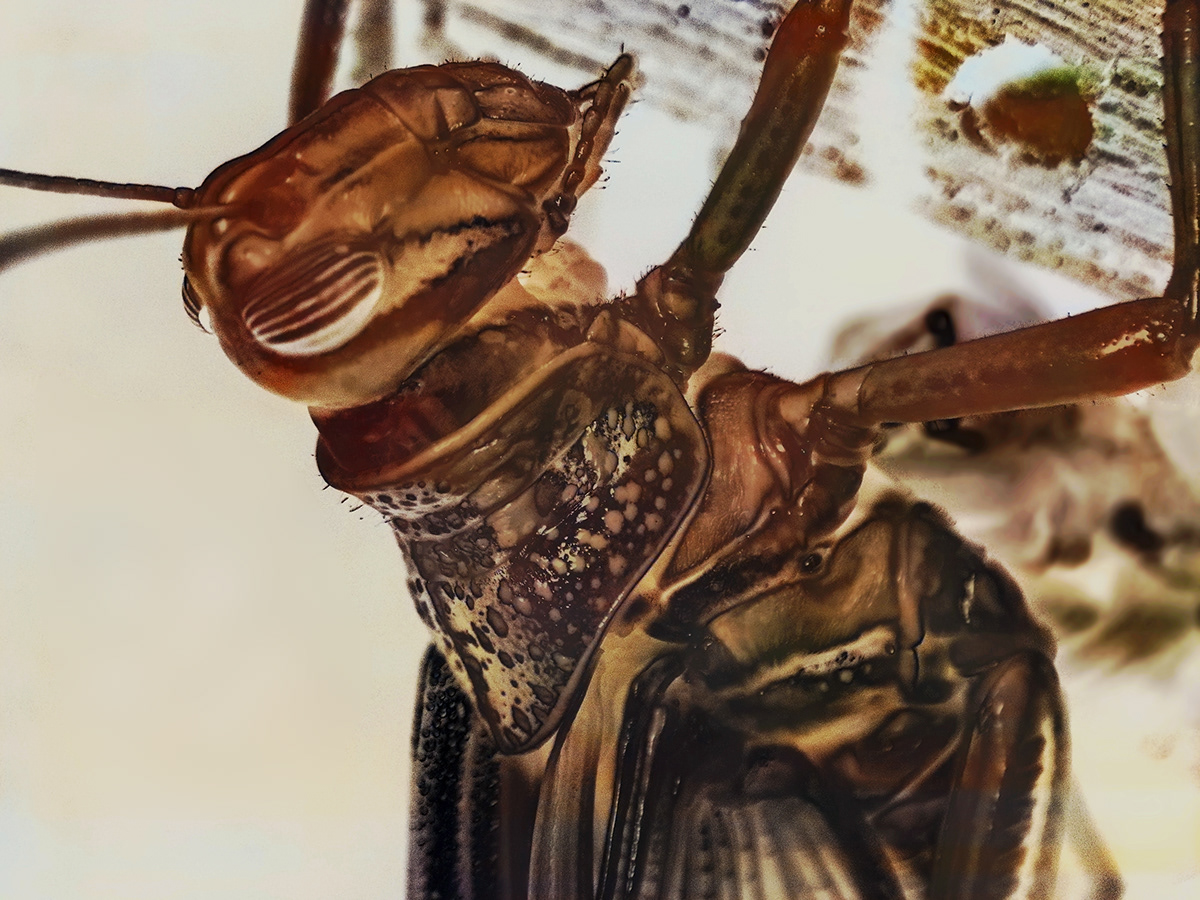


The locust must stay in a well protected hideaway to avoid contact with predators until the cuticle has been completely hardened by sclerotin.
SUBJECTIVE PHOTOGRAPHY AND TEXTURES
The closer I zoom in on the head, the wing joints, or the widely branched veins that supply blood to the wings, the more detail emerges. The transition from objective photography to subjective photography to abstraction is fluid. The more the close proximity of the camera fades out outlines, the more patterns and other recurring structural details come to the fore.
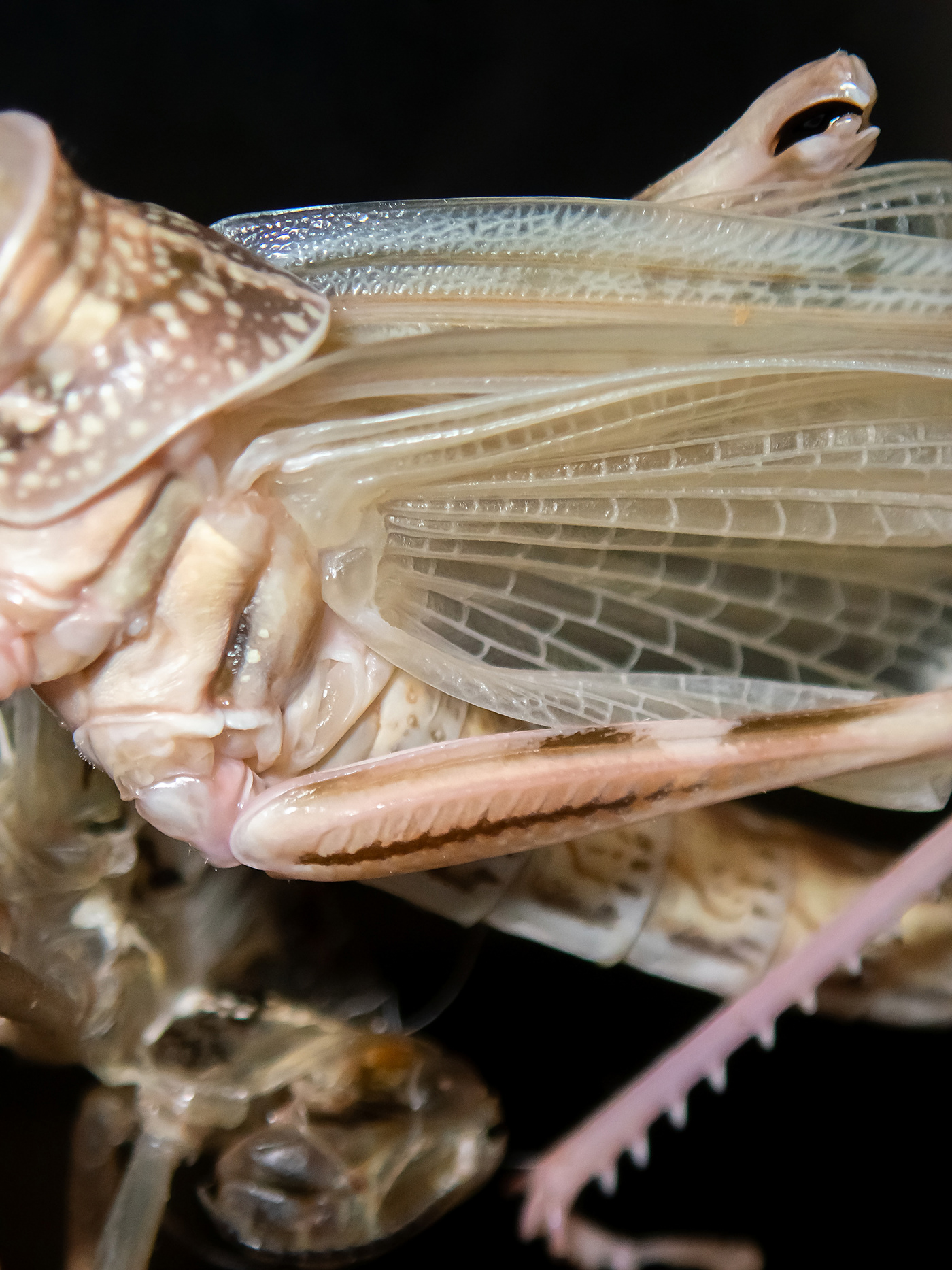


THORAX AND HEAD
Insect wings attach to the meso- and metathorax.
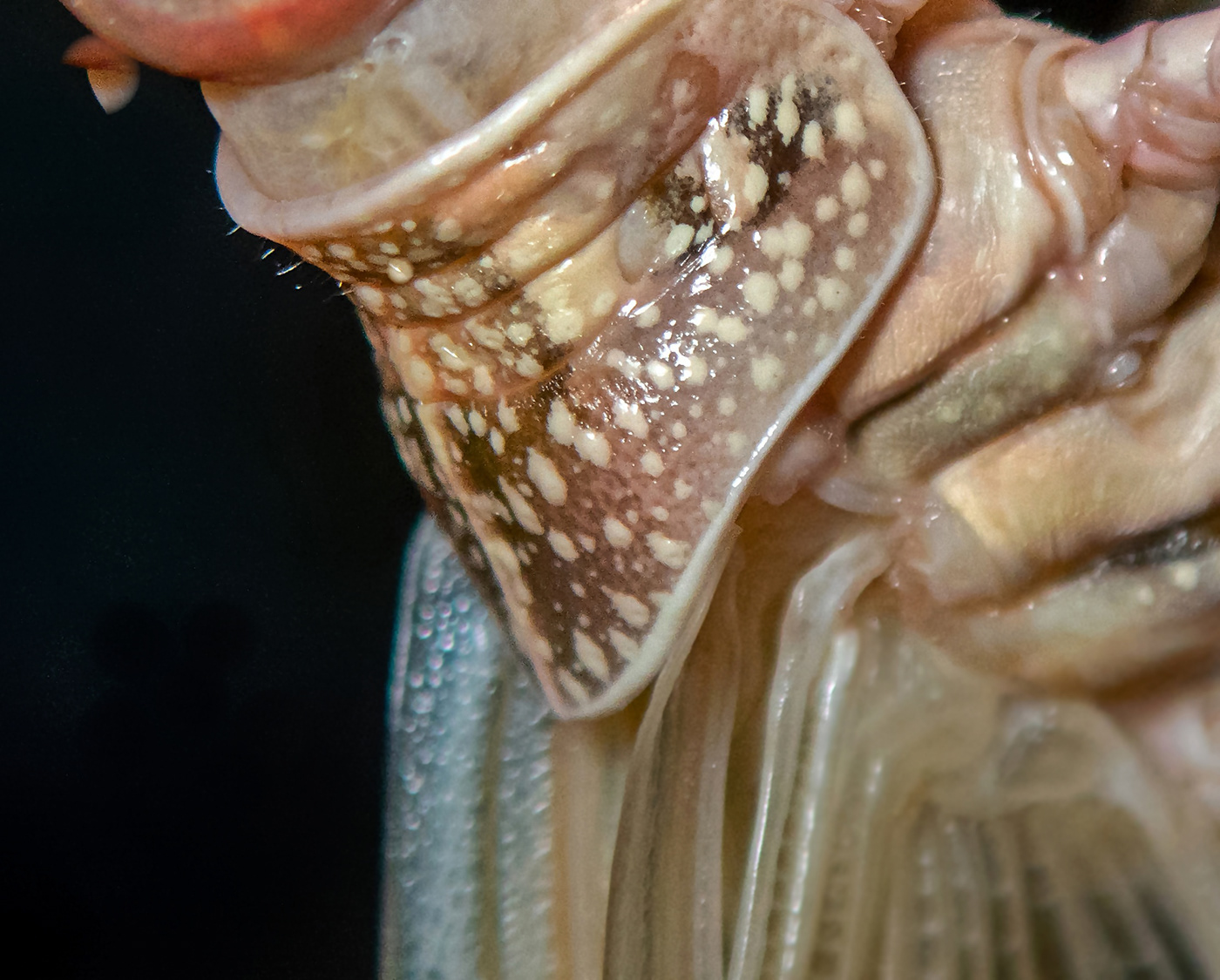
However, insects need optical sense organs to fly, here conspicuous compound eyes.
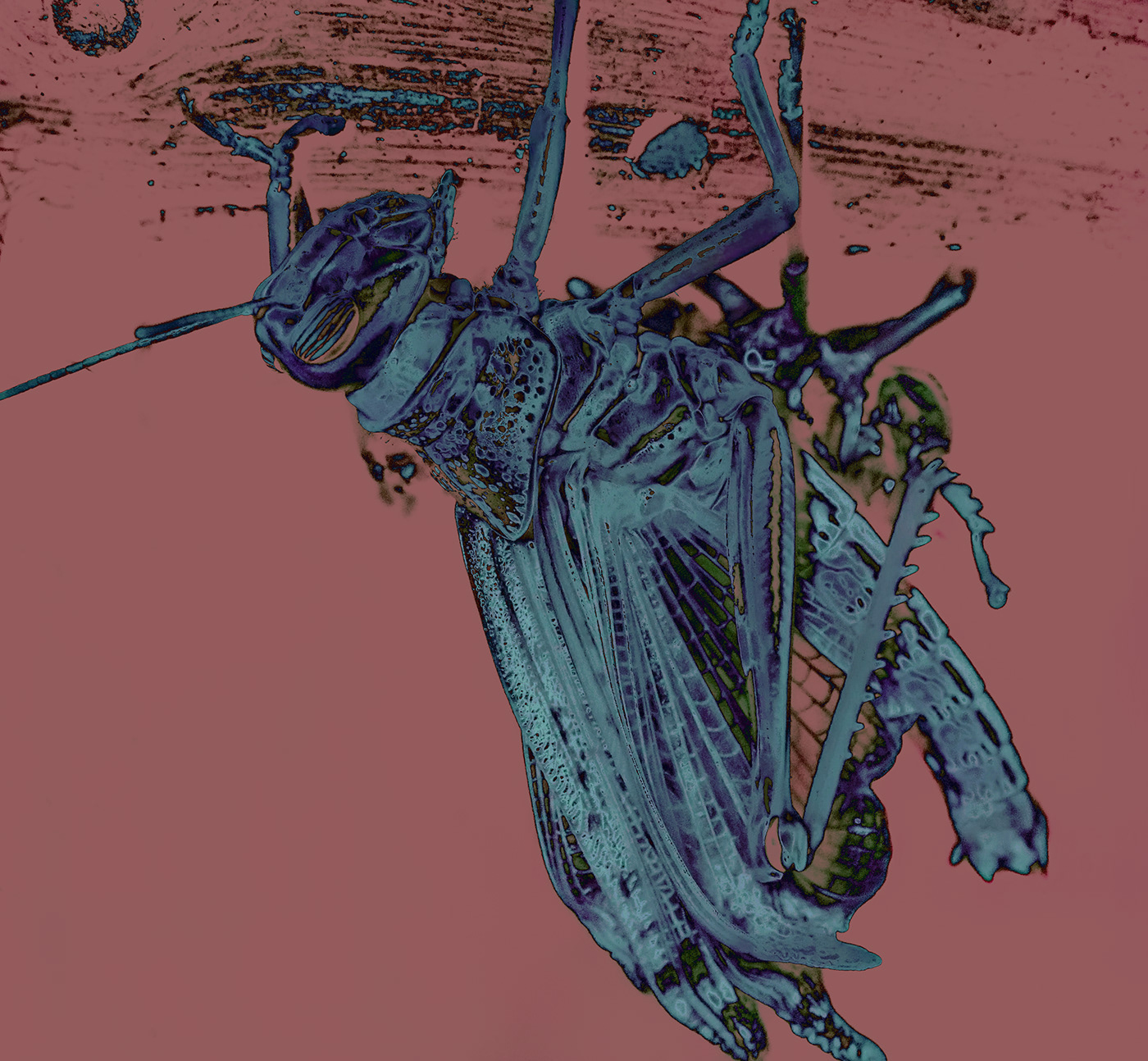


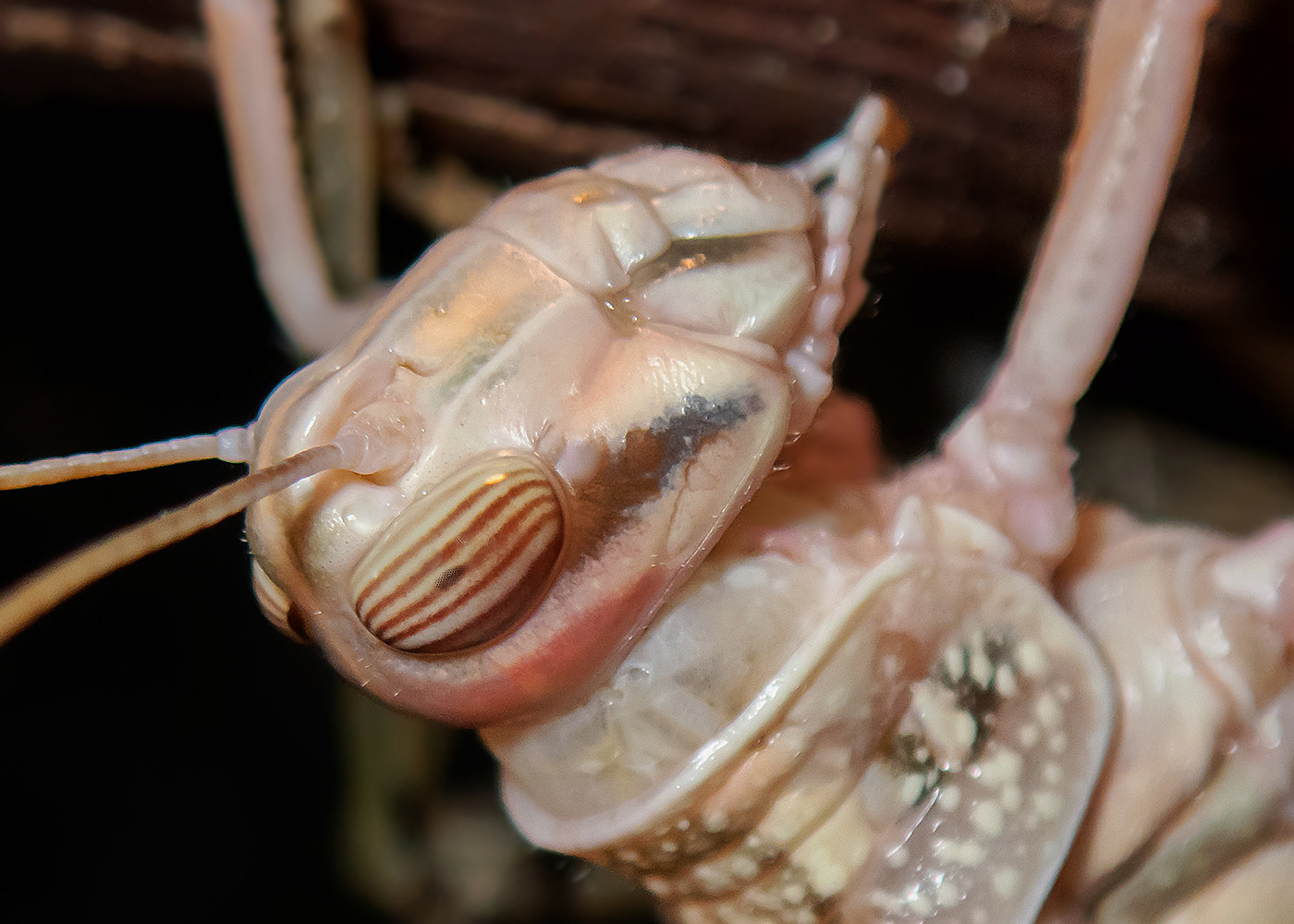


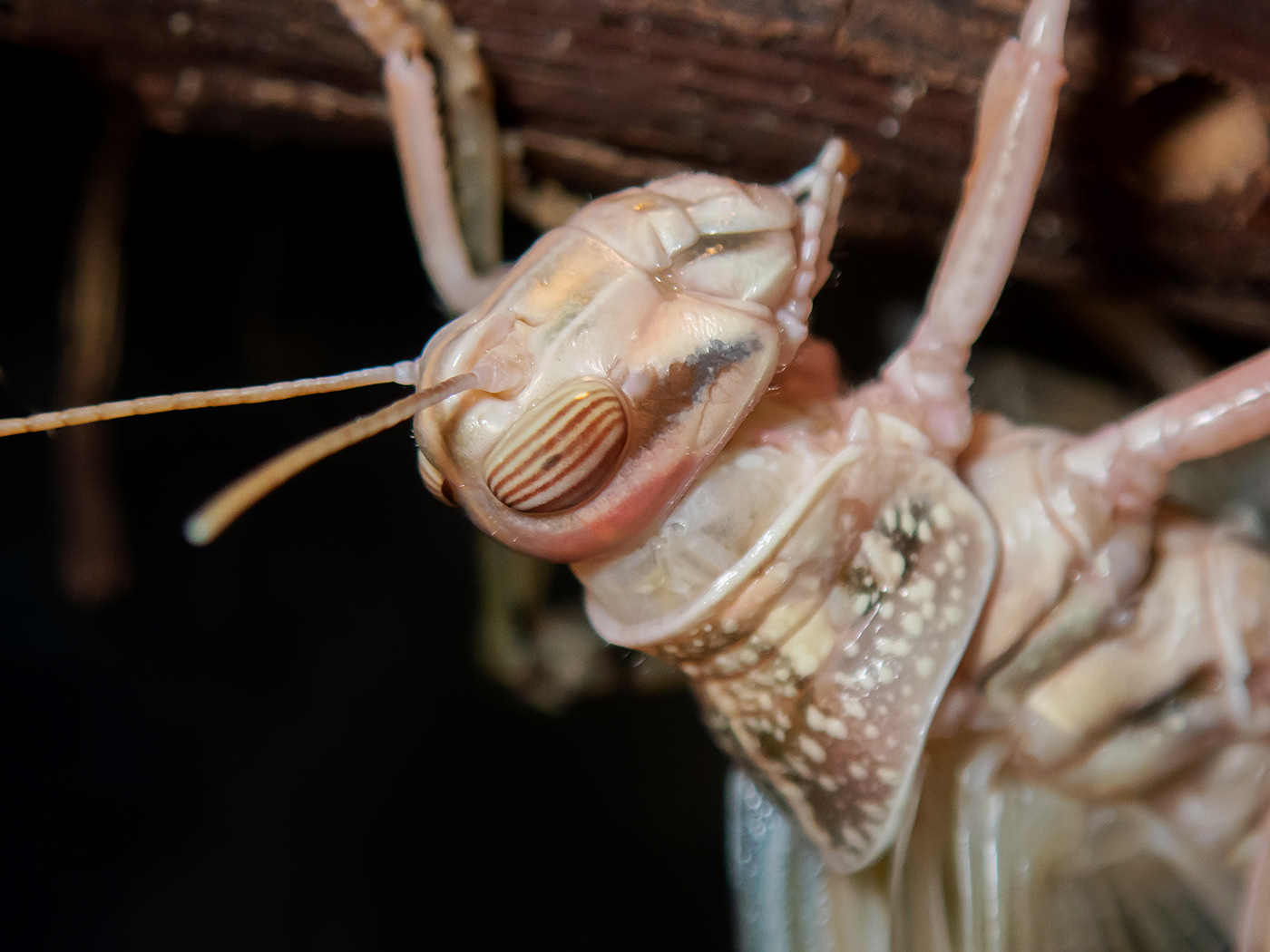






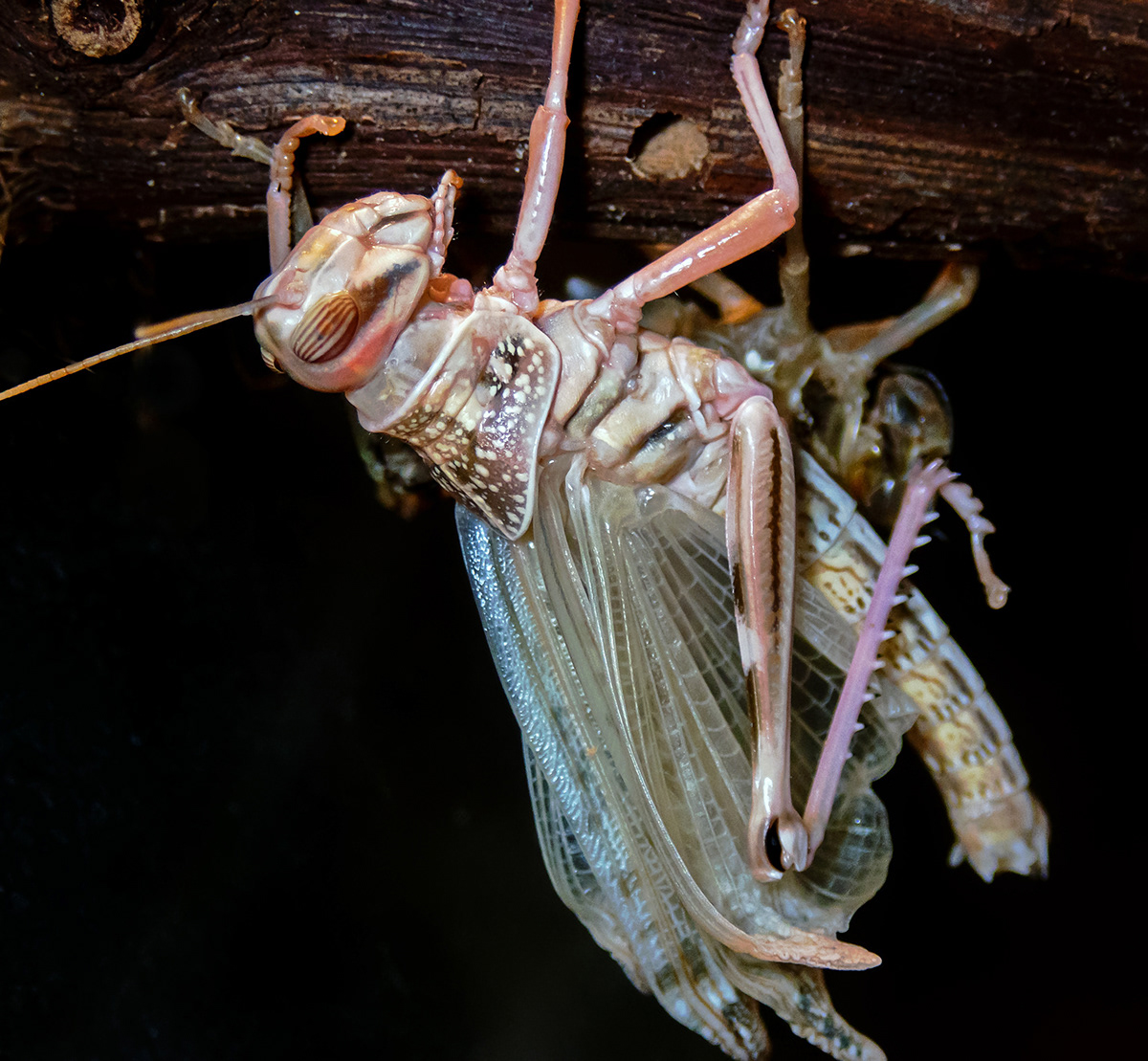


WAITING
- VIDEO -
Soon the desert locust will awaken into lively activity again, will eat, digest what it has eaten and excrete what it cannot digest, it will mate, it will see days and weeks come and go, and one day, after a full life, it will die of exhaustion.
And microorganisms, mites, nematodes and fungi will take its body back to where it came from: the cycle of life.
© Stefan F. Wirth, Berlin 2023




